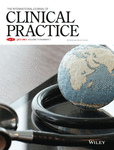Changes in percutaneous approach to kidney stones in children: A single institute experience over 500 cases
Abstract
Purpose
The aim of this study is to identify the changes in patient age and stone sizes with technological advancement over time.
Methods
This study was conducted retrospectively with 404 patients (504 renal units) who underwent percutaneous nephrolithotomy (PCNL) between January 1997 and June 2020. Patient characteristics and trends on instrument preferences were investigated.
Results
Median age was 7 (1-18) years. Male to female ratio was 1.48:1 (301/203). Median stone burden was 2 cm2 (0.20−25) and median operative time was 90 minutes (20-240). The stone-free rate was 74.6%. Patients were divided into four groups according to the size of the instrument. It was found that the size of sheath used increased significantly with increasing age and stone burden. The micro-PCNL group had the shortest hospitalisation and lowest blood transfusion rate. Chronologically categorised four equal groups were compared to analyse changing patient profiles and trends. Median patient age, stone burden, operation time, sheath size, blood transfusion and complication rates decreased significantly with time. However, the use of tracts smaller than 20F and the number of patients with previous intervention increased significantly.
Conclusion
Our study demonstrated that the patient's age and stone size at the time of initial diagnosis decrease over time while miniaturisation techniques increase in paediatric urology.
DISCLOSURE
The authors declare that they have no conflict of interest.




